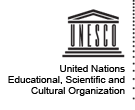According to 2010 reports, Cuba produces more than 790 specialized periodical publications on specific topics, with over a quarter existing in digital or electronic form. In spite of the relatively low internet access rate among the Cuban population (14.2% in 2009), these electronic publications are also diffused through external drives and devices such as cell phones and flash drives, therefore providing a vital means of increasing public knowledge on such resources and improving access to the circulating information. The focus of this project is on developing the media of the Jaimanitas...
IPDC Project beneficiary type: Civil society organizations
In recent years there has been an increased demand for more participatory forms of media in the Pacific region, thus accounting for the emergence of community radios in certain areas. Community radios are important tools for development since they enable the participation of marginalized groups in the development process by offering a platform for democratic discourse. Unfortunately however, many rural dwellers in the Pacific are still unable to access radio due to technical challenges. Furthermore, the scope of existing Community Radios to exercise their full potential as development...
The Paris Declaration on Broadcast Media and Climate Change adopted by UNESCO in 2009, recognizes that broadcast media play a critical role in stimulating policy debate and in mobilizing knowledge to empower societies' decision-making on issues relating to climate change. In order to maximize this role, it is essential that journalists are provided with the means and knowledge to disseminate accurate information on such matters in a manner which is accessible at a local level. This project aims to address this need by equipping print journalists with the necessary scientific knowledge and...
In comparison to its population size, Ethiopia is served by a relatively small number of private and state-owned television and radio stations. Although these have played a fundamental role in bridging the information gap, certain communities whose languages are not yet covered by the mainstream media remain impoverished in terms of their ability to access information. Community radio has the possibility to reach out to such groups, but at present the majority of community radio stations in Ethiopia are forced to operate with very limited means due to short supply of equipment and lack of...
Access to information is of paramount importance in enabling economic, political and social development of Central Asian countries in their fight against corruption. In recent years, developments have been made in this area, with the passing of laws on Access to Information in Kyrgyzstan and Tajikistan occurring in 2006 and 2008 respectively, and discussions for a law on Access to Public Information in Kazakhstan being initiated in 2010. In spite of this progress however, Central Asian mass media continue to encounter problems in accessing information, with the 'Adil Soz' Foundation...
The Cape Verdean island of São Vicente possesses the highest unemployment rate in the country (23% compared to a national average of 17%), with the situation being worst among women and youths. Consequently, many of these unemployed inhabitants choose to take up an artistic career, contributing to a rich cultural scene. In recent years a National Arts and Crafts Centre has been established in the city of Mindelo, providing support for the production and sale of items made by local crafts people. The São Vicente Town Hall would like to further enhance its support for local artists by...
Access to accurate and reliable information is a necessity for the people of Pakistan in their struggle for democracy. At present, more than 40% of the Pakistani population lives in poverty, with over than two-thirds of this figure living in rural areas. Some 65% of people living in rural areas are illiterate and lack access to news and information. This project aims to address this worrying statistic by using radio as a means of reaching out and providing a voice to rural communities. A target group of 150 journalists, selected from 25 FM radio stations from smaller towns and rural areas...
The absence of a media complaints mechanism in Swaziland has led to a lack of trust of the media sector by the majority of citizens. In an effort to address the issue, the Cabinet of the Kingdom of Swaziland has endorsed the creation of a Media Commission Bill which would seek to regulate the media. However, this has been met with opposition by many media stakeholders who feel strongly that the media sector should be self-regulated and not subject to government control, particularly since the country's media landscape is at present dominated by state-owned channels. Media organizations...
The majority of journalists and other media professionals in these means of transmission do not have an independent capacity from the major companies which own most of the existing frequencies. This situation, among other things, does not facilitate the respect of freedom of expression at the national or local level. Since 2009, there has been widespread censorship, including the dismissal of journalists who do not share those changes, or closure of their programs, which is clearly a violation of their rights. This situation reinforces the perception of the country with a freedom of speech...
We might find communities into which this technology and advances in communications are not reached. This situation tends to increase the levels of poverty and makes more difficult the achievement of real development of the rural communities. This is why there is a strong need to strength media communications in the communities, such as the creation of a bulletin board, information sheets, posters, community radio stations, newspaper articles, door to door flyers and magazine articles, which would allow the communities to rescue their form of living, their needs, dreams, achievements, and...
